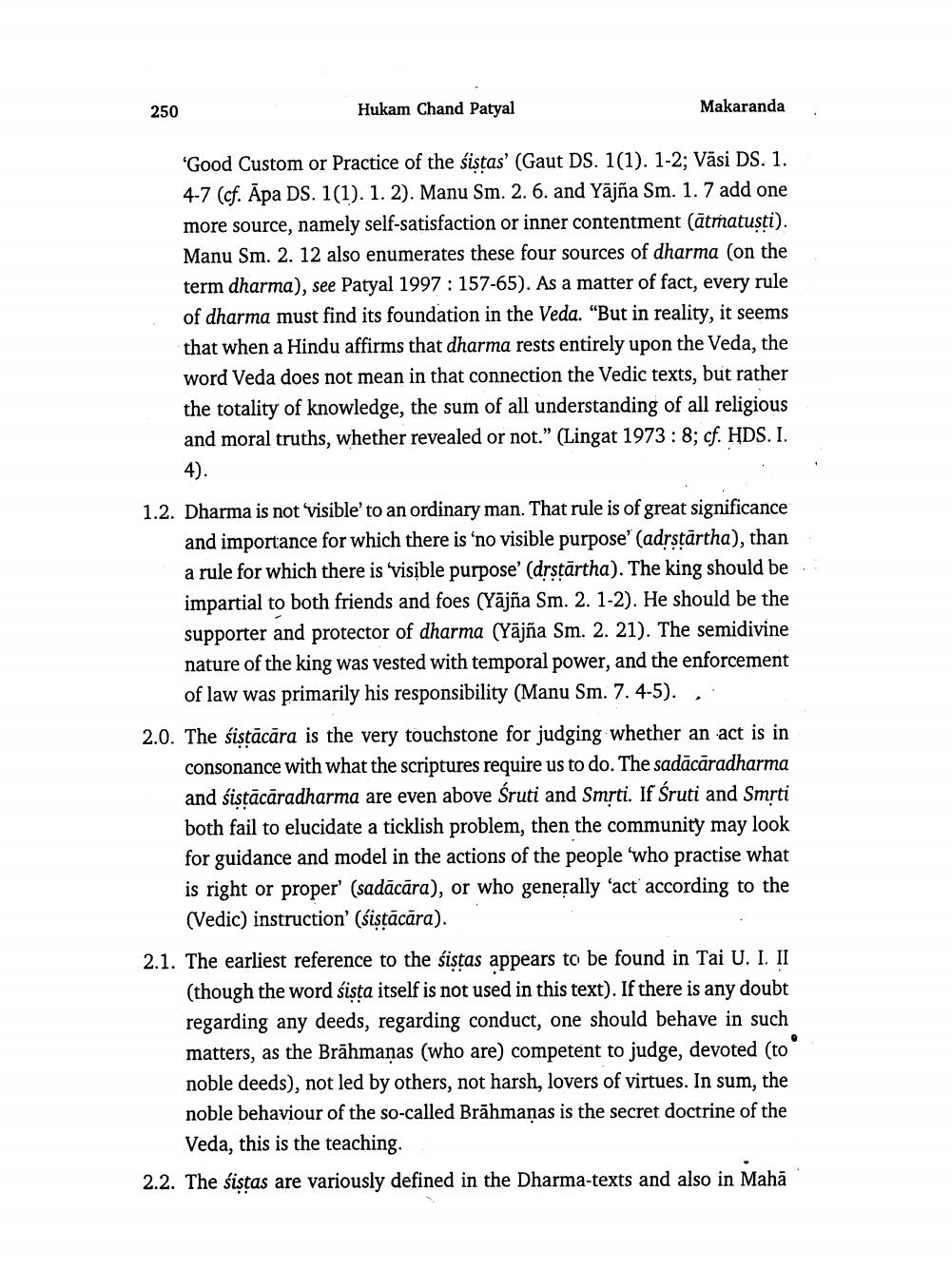________________
250
Hukam Chand Patyal
Makaranda
'Good Custom or Practice of the sistas' (Gaut DS. 1(1). 1-2; Vāsi DS. 1. 4-7 (cf. Apa DS. 1(1). 1.2). Manu Sm. 2. 6. and Yājña Sm. 1. 7 add one more source, namely self-satisfaction or inner contentment (ātratusti). Manu Sm. 2. 12 also enumerates these four sources of dharma (on the term dharma), see Patyal 1997 : 157-65). As a matter of fact, every rule of dharma must find its foundation in the Veda. "But in reality, it seems that when a Hindu affirms that dharma rests entirely upon the Veda, the word Veda does not mean in that connection the Vedic texts, but rather the totality of knowledge, the sum of all understanding of all religious and moral truths, whether revealed or not.” (Lingat 1973 : 8; cf. HDS. I. 4).
1.2. Dharma is not visible' to an ordinary man. That rule is of great significance
and importance for which there is ‘no visible purpose' (adrstārtha), than a rule for which there is visible purpose' (drstārtha). The king should be impartial to both friends and foes (Yājña Sm. 2. 1-2). He should be the supporter and protector of dharma (Yājña Sm. 2. 21). The semidivine nature of the king was vested with temporal power, and the enforcement
of law was primarily his responsibility (Manu Sm. 7. 4-5). , 2.0. The sistācāra is the very touchstone for judging whether an act is in
consonance with what the scriptures require us to do. The sadācāradharma and sistācāradharma are even above Śruti and Smrti. If Śruti and Smrti both fail to elucidate a ticklish problem, then the community may look for guidance and model in the actions of the people who practise what is right or proper' (sadācāra), or who generally 'act according to the
(Vedic) instruction' (śistācāra). 2.1. The earliest reference to the sistas appears to be found in Tai U. I. II
(though the word sista itself is not used in this text). If there is any doubt regarding any deeds, regarding conduct, one should behave in such matters, as the Brāhmanas (who are) competent to judge, devoted (to noble deeds), not led by others, not harsh, lovers of virtues. In sum, the noble behaviour of the so-called Brāhmaṇas is the secret doctrine of the
Veda, this is the teaching. 2.2. The sistas are variously defined in the Dharma-texts and also in Mahā




